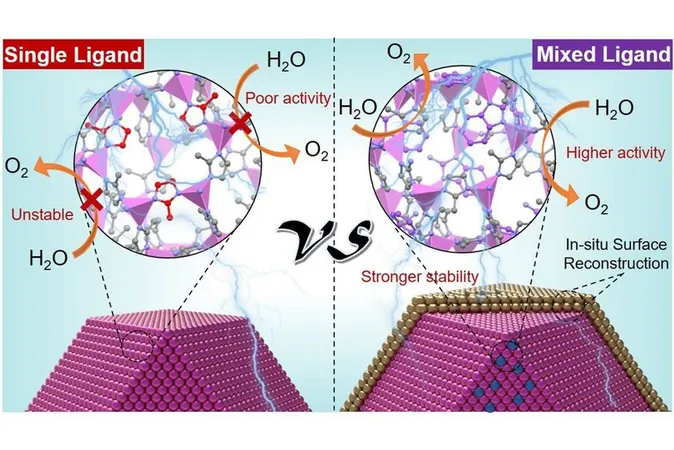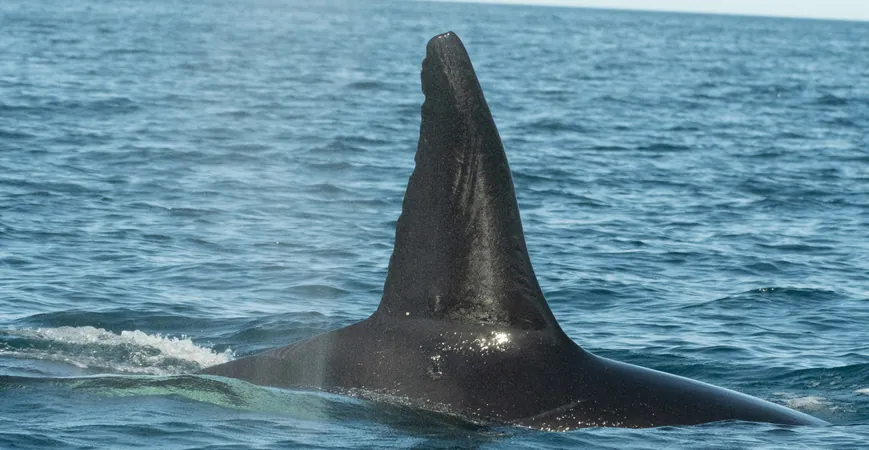
Revolutionary New Hybrid Catalyst Promises Clean Oxygen Production and Enhanced Hydrogen Generation!
2024-11-29
Author: Liam
Overview
Groundbreaking research from TU Wien has unveiled a new hybrid catalyst that could transform the way we produce clean hydrogen and oxygen. As the world increasingly looks for sustainable energy solutions, the development of efficient hydrogen production methods is more critical than ever. One of the most promising techniques involves splitting water into hydrogen (H2) and oxygen (O2), either through electrochemical processes, light-driven reactions, or a combination of both.
The Importance of Catalysts
However, the success of this water-splitting process hinges on the effectiveness of catalysts, which speed up chemical reactions without being consumed. For an ideal catalyst, attributes such as a large surface area for water molecule interaction and exceptional durability under operational conditions are paramount.
Introduction of ZIFs
Enter zeolitic imidazolate frameworks (ZIFs)—innovative hybrid organic/inorganic materials that boast unparalleled surface areas and numerous adsorption sites, making them prime candidates for catalysis. These structures consist of metal ions like cobalt, linked by specific organic ligands through coordination bonds. The challenge, however, lies in the instability of standard ZIFs when exposed to water during electrocatalytic reactions, coupled with their limited electronic conductivity, which hampers their effectiveness.
Innovative Research Approach
To tackle these issues, researchers have pioneered a groundbreaking approach that utilizes a combination of two or more organic ligands in the ZIFs. "We needed to ensure that both ligands were mixed in a manner that maintained the original ZIF structure while achieving a uniform distribution," explains Zheao Huang, lead author of the study. Rigorous investigations into various ligand combinations led the team to discover the most effective pairing.
Results and Findings
The results are nothing short of astonishing. The newly engineered ZIFs exhibit dramatically improved stability, extending the lifespan of electrocatalytic water-splitting activity from mere minutes to at least a full day. This enhancement stems from a careful balance of ligand mixing that reinforces the coordination bonds with cobalt ions. Surprisingly, during the tests, the researchers noted the formation of a thin cobalt oxyhydroxide film on the ZIF nanoparticles that effectively safeguarded them from degradation.
Enhanced Performance
Additionally, the innovative use of dual ligands has propelled the electronic conductivity of the ZIF material by an astonishing factor of ten, correspondingly increasing the rate of the oxygen evolution reaction (OER) also by ten times! "We anticipated some improvement, but the extent of performance enhancement was truly a revelation," added Dominik Eder.
Future Directions
Looking ahead, the research team is keen to expand this versatile design strategy for other classes of ZIFs, as well as metal-organic frameworks (MOFs) that encounter similar stability and conductivity issues. This breakthrough represents an exciting leap towards the creation of advanced materials that can excel in catalysis, sensing applications, and solar energy conversion technologies, paving the way for a future powered by clean and sustainable energy sources.
Conclusion
As the world seeks innovative solutions to combat climate change and achieve energy independence, this new catalyst could become a vital player in the transition toward a greener future. Stay tuned—this could be the start of something big in sustainable energy technology!









 Brasil (PT)
Brasil (PT)
 Canada (EN)
Canada (EN)
 Chile (ES)
Chile (ES)
 España (ES)
España (ES)
 France (FR)
France (FR)
 Hong Kong (EN)
Hong Kong (EN)
 Italia (IT)
Italia (IT)
 日本 (JA)
日本 (JA)
 Magyarország (HU)
Magyarország (HU)
 Norge (NO)
Norge (NO)
 Polska (PL)
Polska (PL)
 Schweiz (DE)
Schweiz (DE)
 Singapore (EN)
Singapore (EN)
 Sverige (SV)
Sverige (SV)
 Suomi (FI)
Suomi (FI)
 Türkiye (TR)
Türkiye (TR)